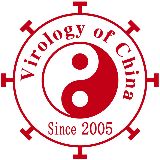随着病毒的持续变异,现有治疗方法的逐渐失效已成为我们面临的重大挑战。这种情况突显了对具有新机制的广谱抗病毒药物的紧迫需求。这些新药物的开发必须考虑到当前病毒株的抗药性以及未来可能出现的变异。因此,迫切需要加速新型抗病毒药物的研发,以确保我们能够有效地应对病毒的不断进化,保障全球公众的健康和安全。
2024年6月11日,中国医学科学院医药生物技术研究所张靖溥研究员团队在Autophagy在线发表题为"ATG10S promotes IFNL1 expression and autophagic degradation of multiple viral proteins mediated by IFNL1"的研究论文,该团队首次发现ATG10S是自噬蛋白ATG10的一种亚型,与III型干扰素(IFNLs)相互作用,能促进完整自噬流,具有广谱抗病毒特性。

该研究揭示了外源性重组ATG10S蛋白通过网格蛋白介导的内吞作用进入细胞,与III型干扰素的IFNL1相互作用,促进ATG7依赖性的ATG12-ATG5复合物的形成,并增加LC3B-II:I 比率,进而加速病毒蛋白的完全自噬降解。此外,研究还发现ATG10S具有转录因子的功能,通过与ZNF460相互作用,竞争其结合位点,直接结合IFNL1启动子上的特定基序,从而激活IFNL1基因的转录,推动IFNL1的表达。(图1)

图1:ATG10S促进IFNL1表达,并通过IFNL1介导多种病毒蛋白的自噬性降解的过程。
该研究对ATG10S与IFNL1相互作用的广谱抗病毒机制以及ATG10S调节IFNL1表达的分子机制进行了深入探讨。ATG10S在自噬和基因调控中的双重作用表明其可能成为广谱抗病毒药物的重要靶点,为自噬在抗抗病毒机制中的作用提供了新的见解。这一研究为开发新型抗病毒药物提供了理论基础和潜在策略。
张苗青副研究员为该论文的第一作者,张靖溥研究员为该论文的通讯作者,中国医学科学院医药生物技术研究所为第一作者和通讯作者单位。本论文受到中国医学科学院医学与健康科技创新工程和中央高校基本科研业务经费等基金的资助。
ABSTRACT
ATG10S is a newly discovered subtype of the autophagy protein ATG10. It promotes complete macroautophagy/autophagy, degrades multiple viral proteins, and increases the expression of type III interferons. Here, we aimed to investigate the mechanism of ATG10S cooperation with IFNL1 to degrade viral proteins from different viruses. Using western blot, immunoprecipitation (IP), tandem sensor RFP-GFP-LC3B and in situ proximity ligation assays, we showed that exogenous recombinant ATG10S protein (rHsATG10S) could enter into cells through clathrin, and ATG10S combined with ATG7 with IFNL1 assistance to facilitate ATG12–ATG5 conjugation, thereby contributing to the autophagosome formation in multiple cell lines containing different virions or viral proteins. The results of DNA IP and luciferase assays also showed that ATG10S was able to directly bind to a core motif (CAAGGG) within a binding site of transcription factor ZNF460 on the IFNL1 promoter, by which IFNL1 transcription was activated. These results clarified that ATG10S promoted autophagosome formation with the assistance of IFNL1 to ensure autophagy flux and autophagic degradation of multiple viral proteins and that ATG10S could also act as a novel transcription factor to promote IFNL1 gene expression. Importantly, this study further explored the antiviral mechanism of ATG10S interaction with type III interferon and provided a theoretical basis for the development of ATG10S into a new broad-spectrum antiviral protein drug.






















热门跟贴